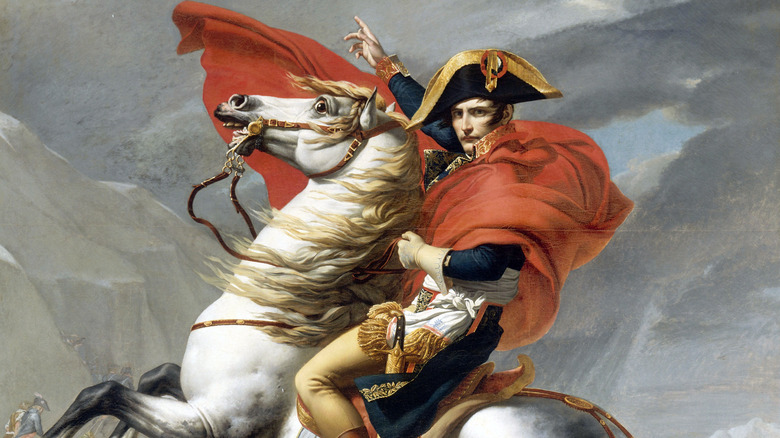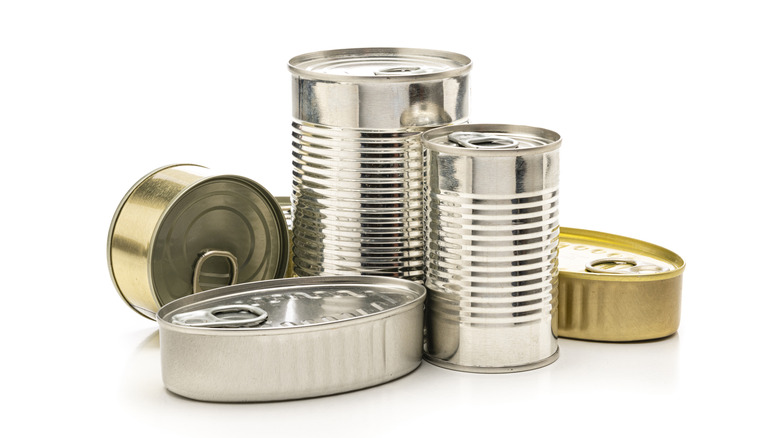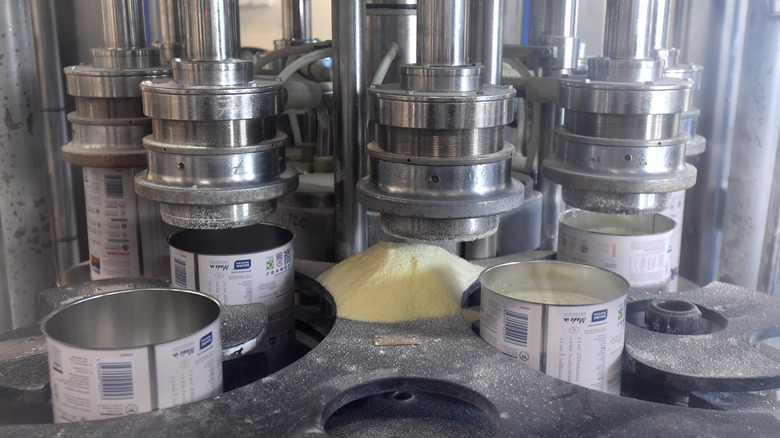How A Challenge From Napoleon Spurred The Invention Of Canned Food
One of the most enduring problems to face the human species has been how to prevent food spoilage. People did find ways to meet this challenge very early on. For instance, archaeological evidence suggests that groups in the Middle East were drying foods as early as 12,000 B.C., and the practices of fermentation, pickling, and salt-curing go back almost as far. But these methods had major flaws. For starters, they were not guaranteed to work in the first place, and even when they did, they often drained the food of both flavor and nutritional value. A truly effective preservation method that kept food palatable and nutritious didn't come around until the early 1800s, and it took a war to make it happen.
The method we speak of is canning, one of the most important developments in the history of food, and it wouldn't have happened if not for the military ambitions of Napoleon Bonaparte. Back in 1795, four years before he would take over as de facto leader of France, Napoleon was serving as a general in the French Revolutionary Wars. His troops were facing an age-old problem — how to feed themselves. Dried foods simply didn't do the job, something the British had found out the hard way during the Seven Years' War four decades prior when more than half their navy died of malnutrition. Seeking to spare his forces the same fate, Napoleon offered up a reward — 12,000 francs to anyone who could develop a better means of food preservation.
The history of canned food
Napoleon's challenge went unanswered for 15 years, but throughout that entire decade and a half, one man was working diligently on a solution. His name was Nicolas Appert, a confectioner, chef, and distiller from the Champagne region who had previously worked for the French nobility. Appert ran a factory where he began experimenting by packing food in champagne bottles, which he sealed with the curious blend of cheese and lime (that's calcium hydroxide lime, mind you, not the citrus fruit). Appert then boiled the bottles, and the combination of heat and oxygen deprivation proved to be an effective means of preservation. From there, Appert advanced to packing food in jars sealed with wire and wax, and tin cans closed with a soldering iron.
In 1810, Appert published "The Book for All Households; Or, The Art of Preserving Animal and Vegetable Substances for Many Years," describing his research and findings. That same year, he claimed Napoleon's 12,000 franc reward, but there was still work to be done in the field of canning. Also in 1810, an Englishman named Peter Durand acquired the first patent for a tin-coated iron can and began supplying food to the British military. Weirdly enough, nobody thought to invent the can opener for another 30 years. The earliest canned foods had to be opened with a chisel — or in the case of traveling troops, by impaling them with a bayonet. By the time Nicolas Appert died in 1841, canning was a widespread practice in Europe and beyond.
How canning actually works
The most interesting thing about Nicolas Appert's invention is that he didn't actually know how it worked. In fact, nobody knew why canning was so effective because they didn't understand why food spoiled in the first place. It was over 50 years after Appert claimed his reward that someone figured out what was making food go bad, and this time, it was another Frenchman whose name you've probably heard: Louis Pasteur. In the early 1860s, Pasteur conducted a series of experiments in which he compared containers of broth, some covered by filters and others left open to the air. Only the uncovered broths went bad, leading Pasteur to conclude that food spoilage was due to invasive organisms from the outside environment — rather than a spontaneous change within the food, as many had previously assumed.
Pasteur's experiments formed the basis of germ theory, and interestingly enough, they too are tied to Napoleon. In 1863, Napoleon III, nephew of Napoleon Bonaparte, asked Pasteur to study spoiled wine. Pasteur built upon his work from the year before to demonstrate that the wine had been contaminated by microbes. To prevent this from happening in the future, Pasteur tried heating wine to between 120 and 140 degrees Fahrenheit (50-60 degrees Celsius). This effectively killed the contaminating bacteria, and provided the basis for pasteurization, the method used to make milk last longer. It also happened to demonstrate exactly why Nicolas Appert's canning method worked so well.


